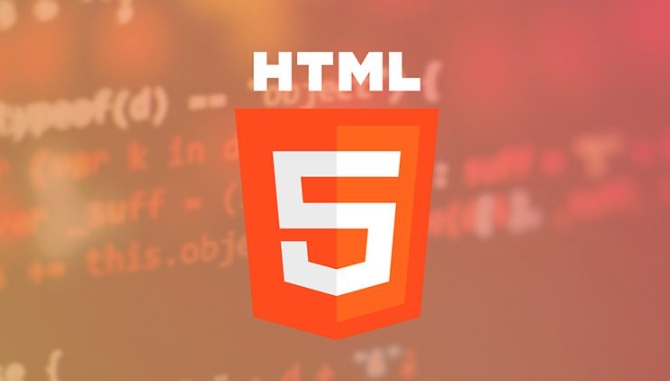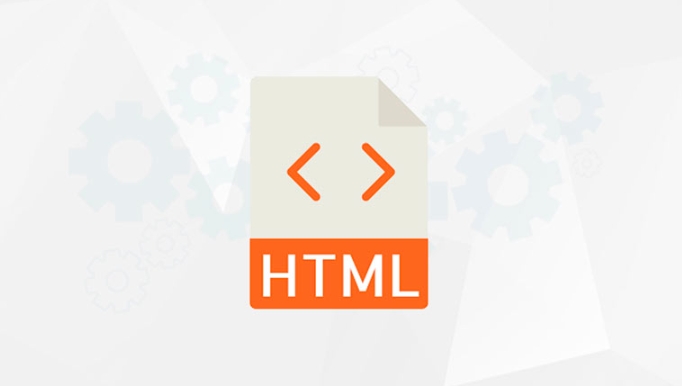Exploring the Shadow DOM Concept in Relation to HTML Structure
Jul 08, 2025 am 12:04 AM <p> When you're working with modern web components, especially in frameworks or libraries that use encapsulation like Angular, Vue, or custom elements, you might come across the term Shadow DOM . It's a key part of how browsers let developers create isolated HTML structures that don't interfere with the main document. If you've ever wondered why some elements on a page seems untouchable by your CSS or JavaScript, there's a good chance they were inside a Shadow DOM.
<p> When you're working with modern web components, especially in frameworks or libraries that use encapsulation like Angular, Vue, or custom elements, you might come across the term Shadow DOM . It's a key part of how browsers let developers create isolated HTML structures that don't interfere with the main document. If you've ever wondered why some elements on a page seems untouchable by your CSS or JavaScript, there's a good chance they were inside a Shadow DOM.
 <p> Let's break down what it means and how it affects HTML structure and styling.
<p> Let's break down what it means and how it affects HTML structure and styling.

What Is the Shadow DOM?
<p> The Shadow DOM is a browser feature that allows you to attach a hidden, separate DOM tree to an element — one that's not affected by the rest of the page. This is super useful for building reusable components without worrying about style clashes or DOM pollution. <p> Think of it like this: You have a regular HTML element (like a<div> ), and then you attach a completely isolated subtree to it. That subtree lives in the “shadow,” and it's rendered separately from the main document. <img src="/static/imghw/default1.png" data-src="https://img.php.cn/upload/article/000/000/000/175190424480883.jpeg" class="lazy" alt="Exploring the Shadow DOM Concept in Relation to HTML Structure"><p> Here's a simple example:</p><pre class='brush:php;toolbar:false;'> const host = document.querySelector(&#39;#my-element&#39;);
const shadowRoot = host.attachShadow({ mode: &#39;open&#39; });
shadowRoot.innerHTML = `
<style>
p { color: red; }
</style>
<p>This text is inside the Shadow DOM.</p>
`;</pre><p> Now, even if there are global styles affecting <code><p> tags, this paragraph will stay red because it's scoped inside the shadow root.How Does It Affect HTML Structure?
<p> From the outside, the host element looks normal. But internally, it has its own structure that's not directly accessible unless you specifically reach into the shadow root.- The main document can't directly select or modify elements inside the Shadow DOM.
- Elements inside the shadow root are scoped , meaning they're isolated from external scripts and styles.
- You can still pass data in via attributes or properties, but the internal structure stays protected.
<video> tag. Its default controls (play, volume, etc.) are actually rendered using Shadow DOM — which is why you can't just inspect them like normal HTML elements.Styling Inside and Outside the Shadow DOM
<p> Styling inside the Shadow DOM works much like regular CSS, but there are a few important things to keep in mind:- Styles defined inside the shadow root only applies within that shadow root .
- External styles won't affect internal elements unless explicitly allowed using
:host,::slotted(), or CSS variables.
<style>
::slotted(p) {
color: blue;
}
</style>
<slot></slot><p> This would allow any <p> element passed into the component via the <slot> to be styled blue, even though it originated from outside the shadow root.<p> Also, if you want to expose certain customization points, you can use CSS variables: :host {
--text-color: green;
}
p {
color: var(--text-color);
}<p> Then, users of your component can override that variable in their own CSS.
When Should You Use the Shadow DOM?
<p> You'll typically see the Shadow DOM used in:- Web Components (custom elements shadow DOM templates)
- Frameworks like Angular, Polymer, or StencilJS
- UI libraries that need strong encapsulation (eg, Material Web Components)
<p> So yeah, Shadow DOM is basically a way to build walls around parts of your HTML. It gives you clean encapsulation for styles and markup, and it plays well with web standards. Not too complicated once you get the hang of it — just take a bit of getting used to how isolation works. <p> Basically that's it.
The above is the detailed content of Exploring the Shadow DOM Concept in Relation to HTML Structure. For more information, please follow other related articles on the PHP Chinese website!

Hot AI Tools

Undress AI Tool
Undress images for free

Undresser.AI Undress
AI-powered app for creating realistic nude photos

AI Clothes Remover
Online AI tool for removing clothes from photos.

Clothoff.io
AI clothes remover

Video Face Swap
Swap faces in any video effortlessly with our completely free AI face swap tool!

Hot Article

Hot Tools

Notepad++7.3.1
Easy-to-use and free code editor

SublimeText3 Chinese version
Chinese version, very easy to use

Zend Studio 13.0.1
Powerful PHP integrated development environment

Dreamweaver CS6
Visual web development tools

SublimeText3 Mac version
God-level code editing software (SublimeText3)

Hot Topics
 Explain the purpose of the role attribute in ARIA.
Jun 14, 2025 am 12:35 AM
Explain the purpose of the role attribute in ARIA.
Jun 14, 2025 am 12:35 AM
ARIA's role attribute is used to define the role of web elements and improve accessibility. 1. Role attribute helps assistive technology to understand the functions of elements, such as buttons, navigation, etc. 2. Use role attributes to assign specific roles to non-semantic HTML elements. 3. The role attribute should be consistent with the element behavior and be verified by the accessibility tool test.
 HTML and Design: Creating the Visual Layout of Websites
Jun 14, 2025 am 12:39 AM
HTML and Design: Creating the Visual Layout of Websites
Jun 14, 2025 am 12:39 AM
How to create a website layout? 1. Use HTML tags to define the content structure, such as, ,. 2. Control styles and positions through CSS, using box model, float or Flexbox layout. 3. Optimize performance, reduce HTTP requests, use cache and optimize images, and ensure responsive design.
 How can you ensure your HTML code is readable and maintainable?
Jun 10, 2025 am 12:06 AM
How can you ensure your HTML code is readable and maintainable?
Jun 10, 2025 am 12:06 AM
Improve the readability and maintainability of HTML code can be achieved through the following steps: 1. Use semantic tags, such as, etc. to make the code structure clear and improve SEO effect; 2. Keep the code formatted and use consistent indentation and spaces; 3. Add appropriate comments to explain the code intention; 4. Avoid excessive nesting and simplify the structure; 5. Use external style sheets and scripts to keep the HTML concise.
 How do I stay up-to-date with the latest HTML standards and best practices?
Jun 20, 2025 am 08:33 AM
How do I stay up-to-date with the latest HTML standards and best practices?
Jun 20, 2025 am 08:33 AM
The key to keep up with HTML standards and best practices is to do it intentionally rather than follow it blindly. First, follow the summary or update logs of official sources such as WHATWG and W3C, understand new tags (such as) and attributes, and use them as references to solve difficult problems; second, subscribe to trusted web development newsletters and blogs, spend 10-15 minutes a week to browse updates, focus on actual use cases rather than just collecting articles; second, use developer tools and linters such as HTMLHint to optimize the code structure through instant feedback; finally, interact with the developer community, share experiences and learn other people's practical skills, so as to continuously improve HTML skills.
 How do I use the element to represent the main content of a document?
Jun 19, 2025 pm 11:09 PM
How do I use the element to represent the main content of a document?
Jun 19, 2025 pm 11:09 PM
The reason for using tags is to improve the semantic structure and accessibility of web pages, make it easier for screen readers and search engines to understand page content, and allow users to quickly jump to core content. Here are the key points: 1. Each page should contain only one element; 2. It should not include content that is repeated across pages (such as sidebars or footers); 3. It can be used in conjunction with ARIA properties to enhance accessibility. Usually located after and before, it is used to wrap unique page content, such as articles, forms or product details, and should be avoided in, or in; to improve accessibility, aria-labeledby or aria-label can be used to clearly identify parts.
 How do I create a basic HTML document?
Jun 19, 2025 pm 11:01 PM
How do I create a basic HTML document?
Jun 19, 2025 pm 11:01 PM
To create a basic HTML document, you first need to understand its basic structure and write code in a standard format. 1. Use the declaration document type at the beginning; 2. Use the tag to wrap the entire content; 3. Include and two main parts in it, which are used to store metadata such as titles, style sheet links, etc., and include user-visible content such as titles, paragraphs, pictures and links; 4. Save the file in .html format and open the viewing effect in the browser; 5. Then you can gradually add more elements to enrich the page content. Follow these steps to quickly build a basic web page.
 What is an HTML tag?
Jun 13, 2025 am 12:36 AM
What is an HTML tag?
Jun 13, 2025 am 12:36 AM
HTMLtagsareessentialforstructuringwebpages.Theydefinecontentandlayoutusinganglebrackets,ofteninpairslikeand,withsomebeingself-closinglike.HTMLtagsarecrucialforcreatingstructured,accessible,andSEO-friendlywebpages.
 How do I create checkboxes in HTML using the element?
Jun 19, 2025 pm 11:41 PM
How do I create checkboxes in HTML using the element?
Jun 19, 2025 pm 11:41 PM
To create an HTML checkbox, use the type attribute to set the element of the checkbox. 1. The basic structure includes id, name and label tags to ensure that clicking text can switch options; 2. Multiple related check boxes should use the same name but different values, and wrap them with fieldset to improve accessibility; 3. Hide native controls when customizing styles and use CSS to design alternative elements while maintaining the complete functions; 4. Ensure availability, pair labels, support keyboard navigation, and avoid relying on only visual prompts. The above steps can help developers correctly implement checkbox components that have both functional and aesthetics.






